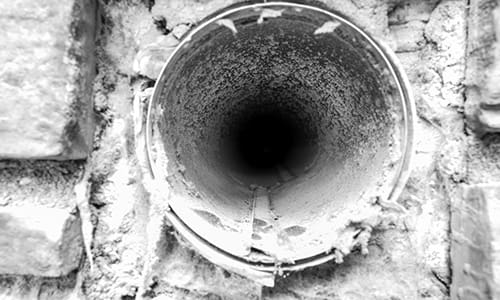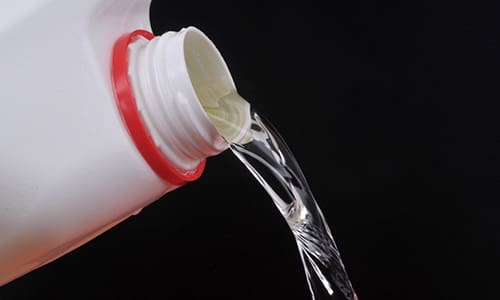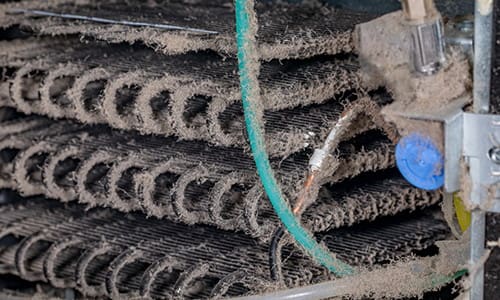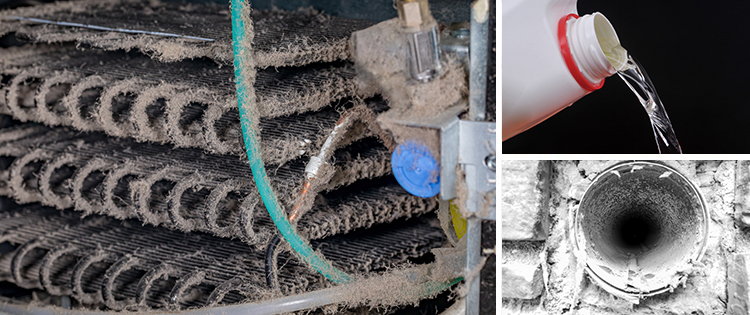Although you might not like house cleaning, there is a sense of satisfaction when completing your to-do list. However, cleaning isn’t just for your happiness, it’s also important for your health. This article shares 5 cleaning tips to avoid unsafe and dangerous situations.
Lint Traps and Dryer Vents
Did you know that clothes dryers are a top cause of house fires in the U.S. with approximately 3,000 fires a year, resulting in an estimated $35 million in property damage? Dryer lint traps and vents trap lint can stop the airflow to your dryer which causes the dryer to be overheated.
- The lint trap – Clean after using dryer. If clogged, use a scrub brush and wash with warm soapy water, rinse with clean water, and towel dry.
- The dryer vent – Clean ductwork yearly to keep your home safe and to ensure the dryer runs properly. First, unplug the dryer. If you have a gas dryer, turn off the supply valve. Next, pull the dryer away from the wall. Then, disconnect dryer duct from the back and remove lint from the hole at the back. Use hose attachment of a shop vac or vacuum cleaner to clean in and around hole. Detach duct connecting to the wall, if possible. Remove lint from the duct by hand and then vacuum inside. Go outside and take off the exterior vent cover to clean using a vacuum. If needed, use flexible brushes with extension. Then, reattach ductwork and vent cover. If any ducts are damaged, seal with UL-listed metal foil duct tape or replace. Push dryer back into place and plug in/turn the gas valve on.

Mixing Bleach with Other Substances
- Ammonia – When ammonia and bleach mix, a toxic chloramine vapor is produced. The fumes can cause your throat to burn and damage your airways. Coughing, nausea, shortness of breath, watery eyes, chest pain, wheezing, and pneumonia are common side effects. At the highest levels, it can cause even death.
- Other cleaners – Bleach is found in many disinfectants, glass and window cleaners, automatic dishwasher detergents, toilet bowl and drain cleaners, rust removal products, brick and concrete cleaners, and interior/exterior house paints. Bleach can react to some oven cleaners, insecticides, hydrogen peroxide, and pool chemicals. (The symptoms are the same as above.)
- Acids – When bleach is mixed with an acid, chlorine gas is given off. (The symptoms are the same as above.)
Be sure to read the labels on any products before use. If you see “sodium hypochlorite” as an ingredient, you will know it as chlorine bleach. Use natural cleaners: vinegar, lemon juice, or baking soda as a healthy alternative.
Related: DIY Cheap Bio Enzyme Solution For Home Cleaning

Cleaning the Refrigerator
Weekly cleaning of your refrigerator helps with decluttering, germ prevention (bacteria such as salmonella, e-coli, and botulinum in food), and preventing sickness and food poisoning from eating old or expired foods.
Quite alarming, the Center for Disease Control estimates that 1 in 6 Americans get sick from food poisoning each year, 128,00 are hospitalized, and 3,000 die.
- Control Inside – Empty refrigerator completely. Toss expired food and old leftovers; compost and recycle containers. Remove drawers and shelves. Wash with white vinegar (1 part vinegar to 3 parts water) or baking soda and a dish sponge, thoroughly rinse, and dry completely. Before putting back, wash interior surfaces and scrub trouble spots with a scrub brush, baking soda and water paste, and a cloth. To deodorize, leave a box of baking soda inside.
- Outside – Wipe down outside, top, and door handle with a cloth and warm, soapy water. Dry with paper towels or microfiber cloth. If the refrigerator is stainless steel, use a stainless steel cleaner and microfiber cloth. Next, use a coil cleaning brush to dust the condenser coils. Clean the drip pan. Vacuum under the refrigerator.
- Additional Suggestions – Don’t overstuff refrigerator as cold air needs to circulate so food stays chilled and bacteria are eliminated. Keep temperature between 32-40 degrees F and the freezer below 0 degrees F. Don’t wash fruits and vegetables until used as bacteria love moisture. Keep produce in separate crispers as fruit emits a gas (ethylene) that hastens vegetable spoilage. Keep eggs in their carton and place toward back where temperature is the coldest.
Related: 9 Little Tricks To Save Electricity At Home Big Time

Handling Raw Meat
The most common food safety concern with handling raw meat is linked to pathogenic bacteria, typically E. coli contamination.
This may lead to dehydration, diarrhea, fever, and stomach cramping. Some may have long-term effects and even die. To avoid contamination, thaw or marinate meat in the refrigerator. Put on the lowest shelf to prevent meat juices dripping on food below. Any utensils used to handle or prepare the raw meat need to be cleaned. Use clean utensils to chop up vegetables. Wash knives, cutting boards, plates, surfaces, etc., and hands with soapy water immediately after handling meat. Wash dish cloths in the hot cycle of your washing machine. When shopping, separate raw meat from other foods and place in plastic bags.

Preventing Fungi: Mildew and Mold
Mildew and mold need water, oxygen, and food to live. They can cause health concerns: coughing, wheezing, itchy eyes, dry/scaly skin, and runny nose. Long-term serious health conditions may result.
These fungi like to live in crawl spaces, showers and bathtubs, ceilings near exhaust fans or recessed lights, areas where water is dripping (drains and gutters), under carpet, near HVAC vents, and in walls near the clothes dryer vent.
Prevention
- Keep things clean
- Use dehumidifiers and natural ventilation (windows)
- Keep venting ducts remain clean
- Eliminate sources of dampness (e.g., pipe leaks)
- Change furnace filters regularly
- Make sure bathrooms and basements have adequate ventilation and don’t use carpeting in these locations
- Keep organic plant containers dry
- Remove vegetation around the house foundation
- Clean gutters
Cleaning
- Wear breathing protection, waterproof gloves, and eye protection
- Use mild detergent or vinegar and water with a new sponge
- Mist area with clean water; repeat with soapy water or vinegar solution
- Rub off mildew or mold with sponge; frequently change water and use new sponges
- Let air dry thoroughly (48 hours)
You may also like:
 5 Mistakes To Avoid On Your Property
5 Mistakes To Avoid On Your Property
US Nuclear Target Map. Do You Live in The Danger Zone? (Video)
The Most Contaminated Vegetables You Should Look Out For
Canning Mistakes Even The Most Advanced Homesteaders Make
If You Have This Plant in Your Backyard, You Will Never Run Out of Soap








